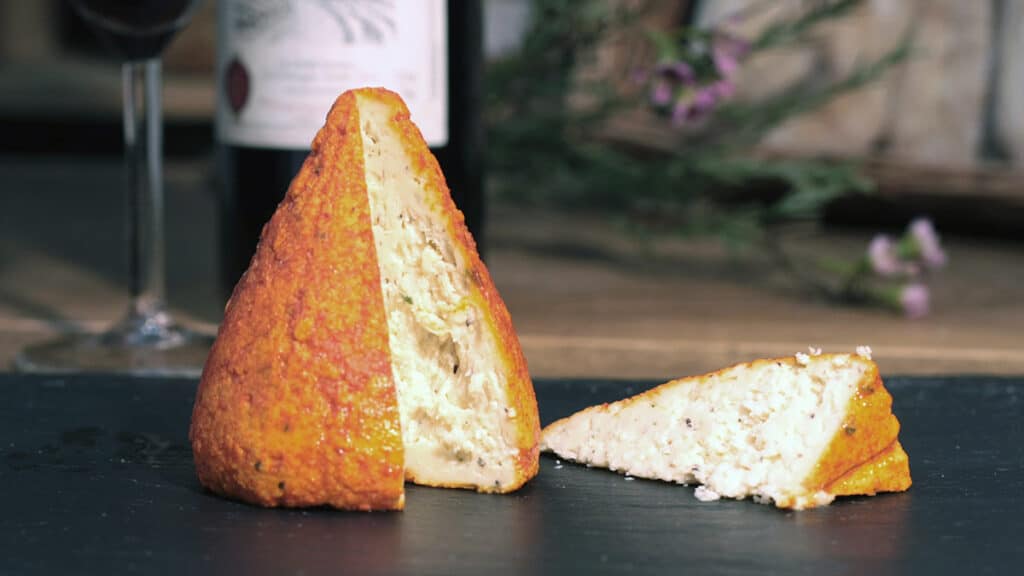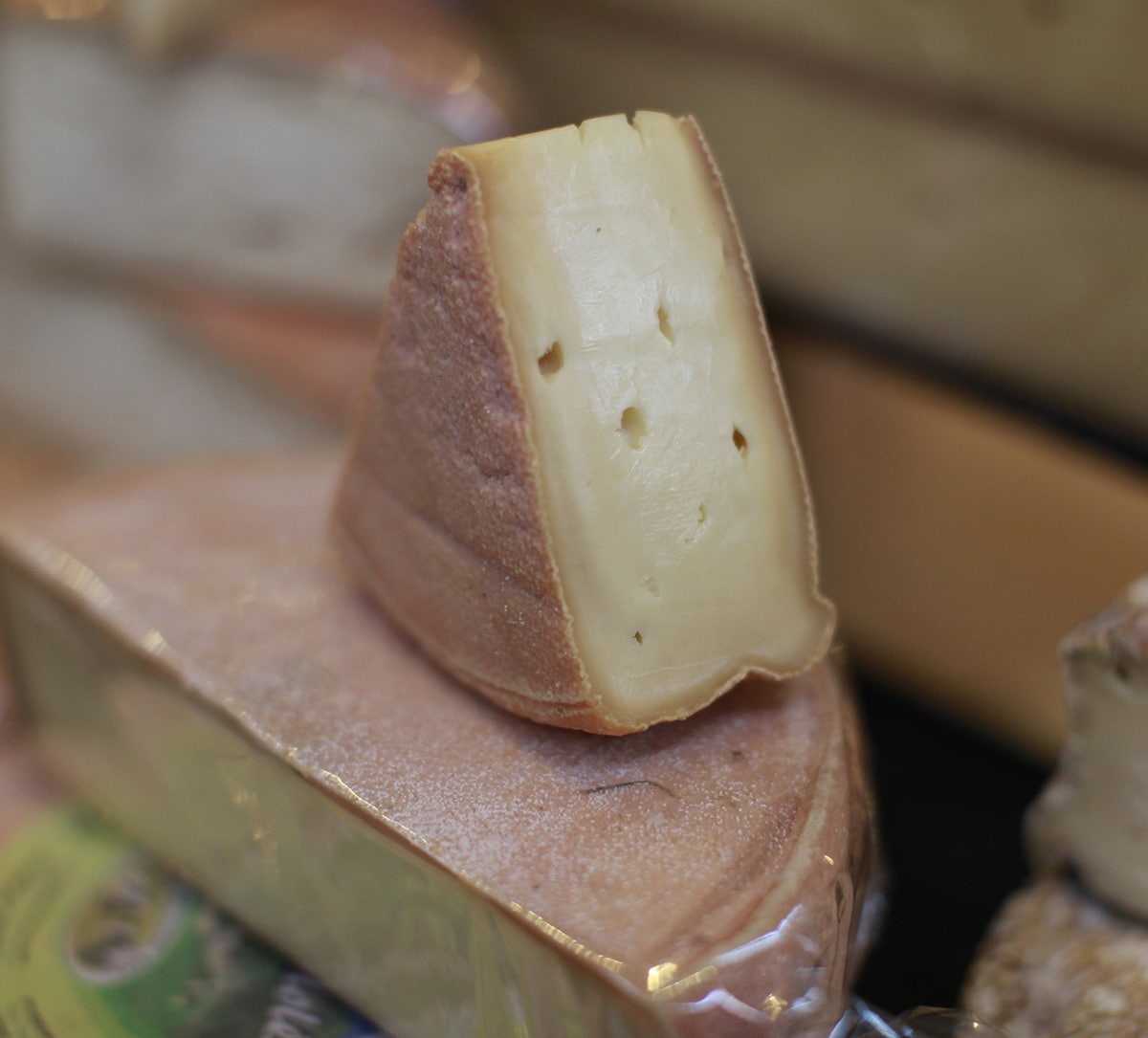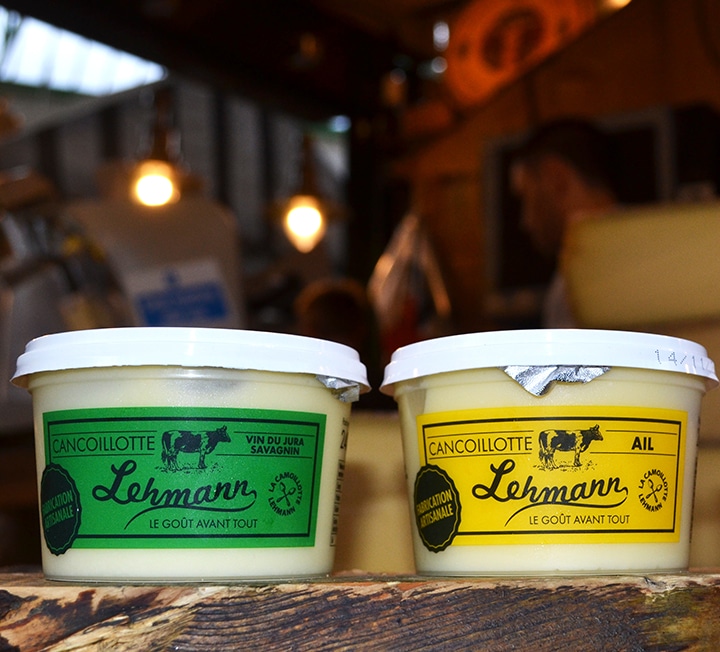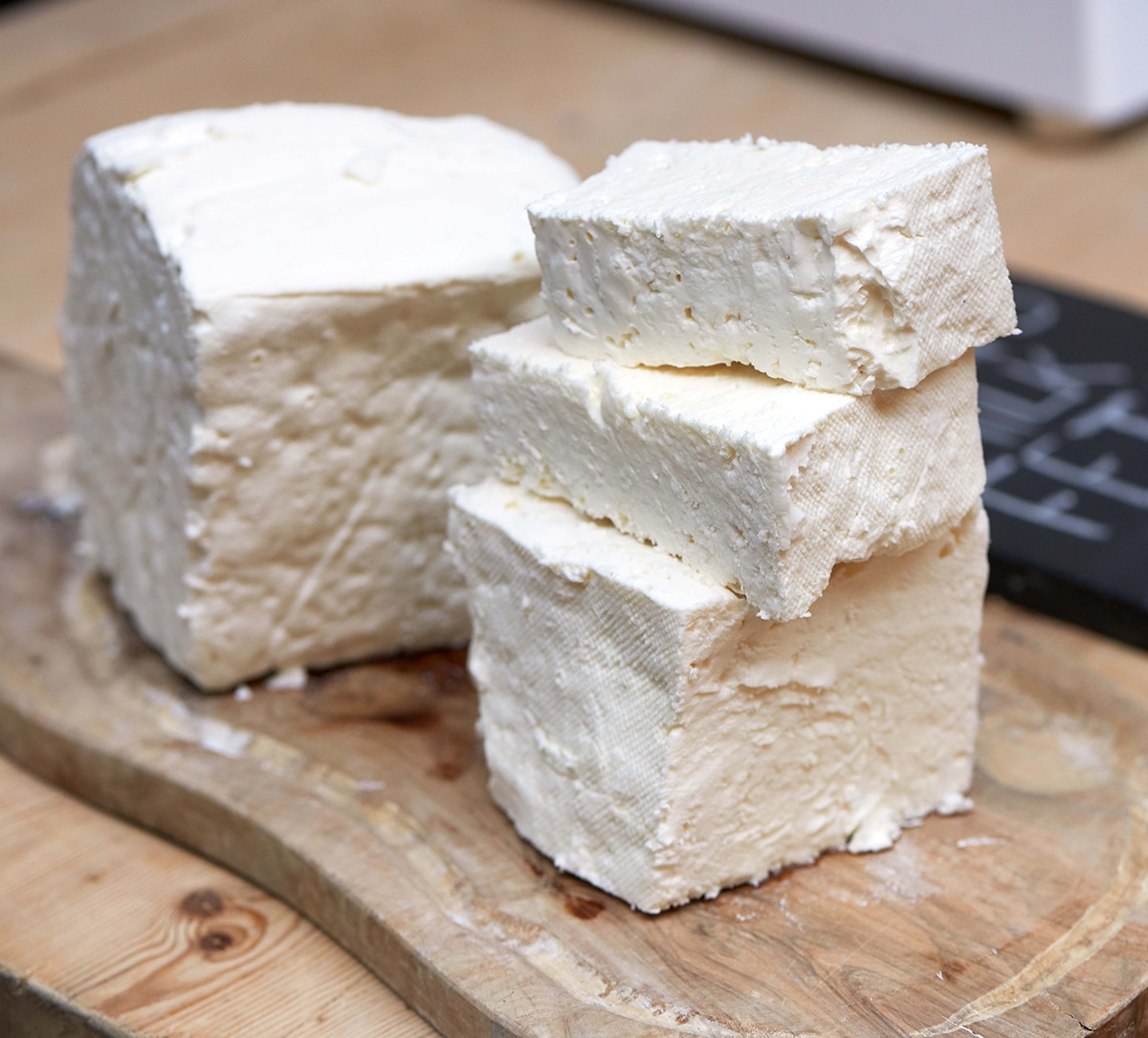Blessed are the cheesemakers: Boulette d’Avesnes
Clare Finney tells the story behind a devilishly strong, vibrant cheese from Une Normande a Londres


“KNOWN AS THE ‘DEVIL’S SUPPOSITORY’, BOULETTE D’AVESNES HAS BEEN AROUND SINCE THE 15TH CENTURY”
“You can taste it for days,” warns Matthew of Une Normande de Londres, looking fearfully at the fiery orange ovoid in front of us. We can believe it: the cover has only been off two minutes and already we can smell it: musk, spicy heat, a not unpleasant dampness, and herbs.
It looks like hell; and from the sound of it, tastes not dissimilar. In a good way. Known as the “devil’s suppository”, Boulette d’Avesnes has been around since the 15th century – and the taste, if you don’t eat it while it’s young, will linger for almost as many years again.
This is cheese curds that have been crushed, rolled in parsley, pepper and tarragon, shaped by hand and rubbed with paprika – hence its vibrant volcanic shade. During the course of its three-month maturation in a damp cellar (itself probably unchanged in six centuries) the rind is weekly washed in lashings of beer.
It’s made of bits of under-ripe or less-than-perfect maroilles cheese – for which the region, Nord-Pas-de-Calais, is famous – which itself developed as a way of using up leftovers from making butter. Though by no means a mild cheese to start with, the supposed ‘fact’ that maroillles was created by a monk in the 10th century shows how far, with the addition of a bit of beer and paprika, a cheese can come.
The miners who once populated this region and whose legacy can be seen in the now grassy mounds which litter the otherwise flat landscape, loved this weirdly beautiful suppository. “They would impale it above their windows to dry it out”, making it even stronger. It’s the thought of this that prompts his warning about its aftertaste.
“When it’s young it is delicious – perfect with just some bread and white beer – but old it is very, very strong, and sharp,” he crinkles his nose. It loses its complexity: there’s a lot going on in this small, fierce dome, from herbs to spices to the inimitable flavour of a fine, artisanal cheese, and it loses some of its texture, which should be creamy teetering on the edge of crumbly, dense and firm.
We do as Matthew suggests, and tentatively tuck in to the cheese with a baguette from Olivier’s Bakery. In the other hand we clasp a glass of cold beer to steady ourselves and quench the thirst.
The impact is intense: like retreating to a sauna from a chilly outdoors. Spicy, smoky, deep, yet enriched by herbs, this is the cheese answer to marmite, were marmite laced with paprika; and a powerful reminder of just how narrow, when it comes to taste, is the line between heaven and hell – the Boulette d’Avesnes is definitely the former.


